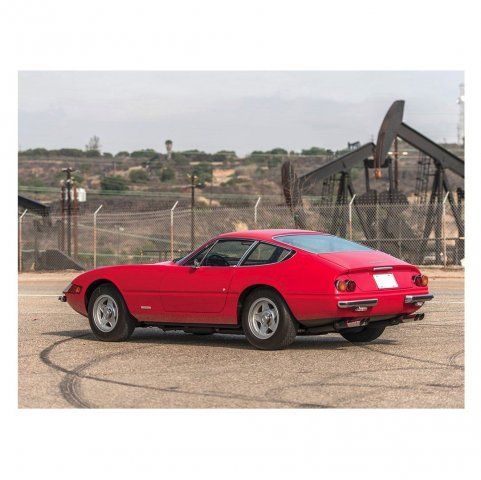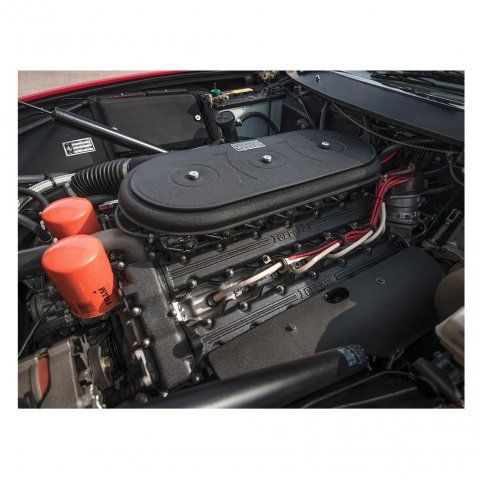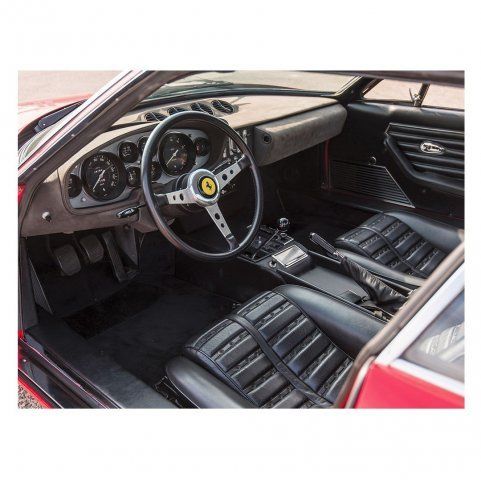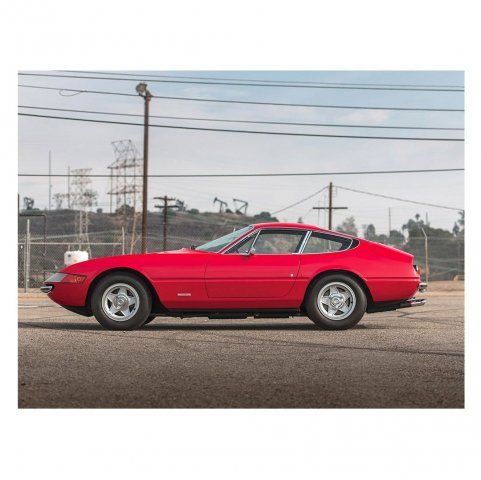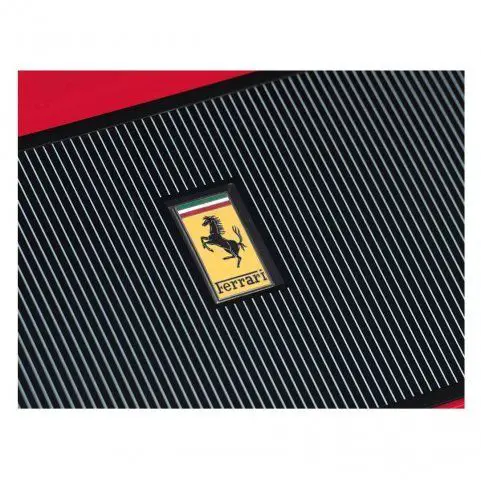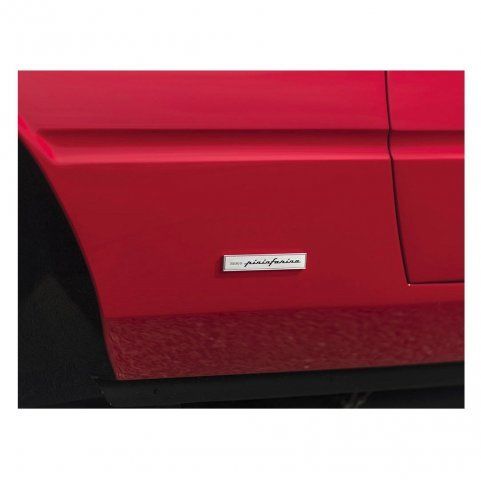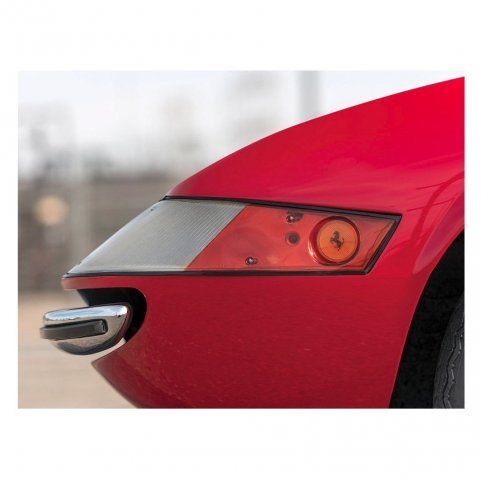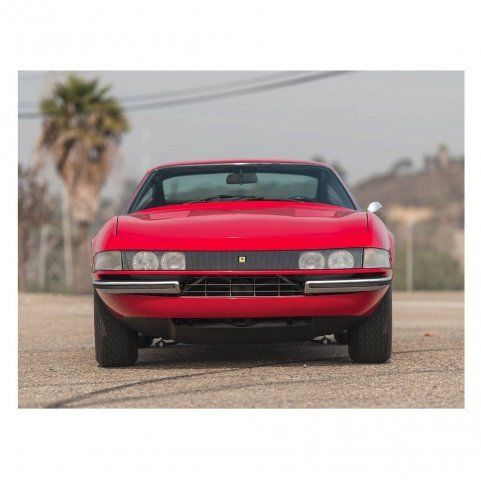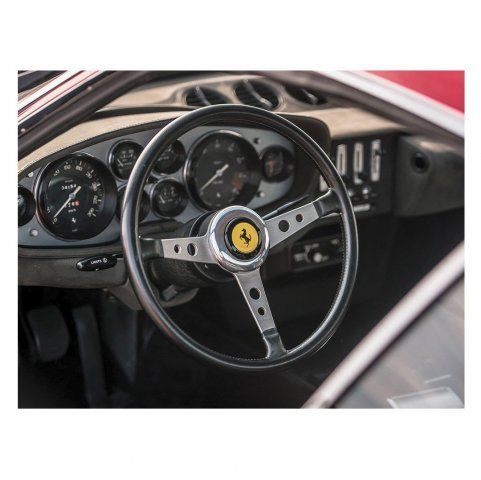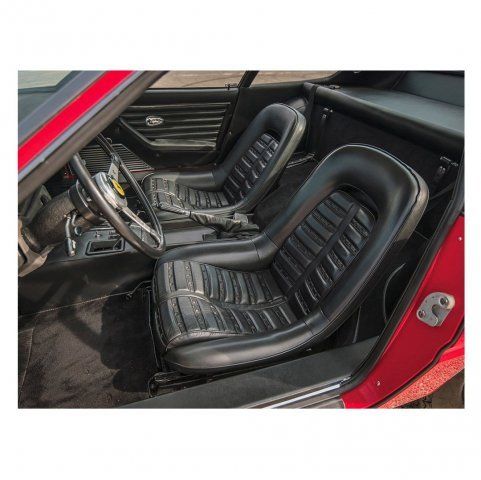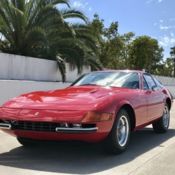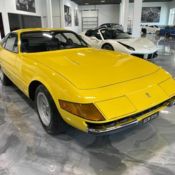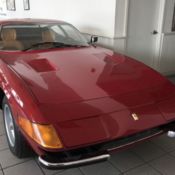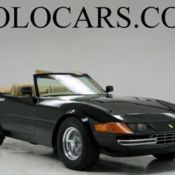|
352 bhp, 4,390 cc DOHC V-12 engine with six Weber carburetors, five-speed manual transmission, independent front and rear suspension with unequal-length wishbones and coil springs over telescopic shock absorbers with anti-roll bars, and four-wheel hydraulic disc brakes. Wheelbase: 94.5 in. * European specification with Plexiglas nose * Equipped with desirable factory air-conditioning * Documented by Ferrari historians Marcel Massini and Jarrett Rothmeier * Recently freshened restorationBy 1968, Ferrari had a new and serious rival in the supercar sweepstakes, a tractor-maker whose factory was just east of Maranello in Sant'Agata Bolognese. Its name was Lamborghini and it set the automotive world afire with its mid-engined Miura in 1966. While Ferrari offered a mid-engined 206 GT road car in early 1968, it also introduced a front-engine V-12 coupe---the 365 GTB/4 in early 1968 at the Paris Auto Show---as a counter offensive to the upstart Lamborghini. At just under $20,000, it was the most expensive production model that Ferrari had offered to date, and it was cloaked in aggressive, yet handsome styling by Pininfarina. It was also the fastest car Ferrari had ever built . . . faster, in fact, than the Miura. In 1968, that was what mattered most.First shown at the Paris Auto Salon in 1968, the 365 GTB/4 quickly became known as the Daytona. The name was unofficially given to the car by the media following a 1-2-3 Ferrari victory at the 1967 Daytona 24-Hour race. The popular nickname stuck, apparently to the chagrin of Enzo Ferrari. Production continued through 1974 with 1,285 coupes and 127 spiders built.The Daytona was built on the same wheelbase as its predecessor, the 275 GTB/4, also styled by Pininfarina and bodied by Scaglietti. Early cars, including all European-spec models, were equipped with four headlights, set behind a full-width Plexiglas nose. U.S. regulations, however, did not approve of the setup, and those that followed gave way to a more conventional pop-up headlight system. The 365 GTB/4 was blessed with a near-perfect 52/48 weight distribution with the big aluminum block engine set as far back in the chassis as possible and the five-speed manual transaxle. An all-independent suspension provided excellent handling with double wishbones and coil springs all-around, anti-roll bars front and rear, and four-wheel disc brakes for confident stopping its heart was a new version of the Lampredi V-12 with four chain-driven camshafts fed by six twin-choke downdraft Weber carburetors good enough for 352 horsepower at 7,500 rpm; hardly a coincidence that it was two horsepower more than its competitor, the Miura. As delivered from the factory, Road & Track testing proved a top speed of 174 mph and a 13.8-second quarter-mile at 107.5 mph. Ferrari claimed a 0--60 mph time of 5.5 seconds, and a 0--100 mph time in just a tick over 12.5 seconds---numbers that would be the envy of many manufacturers nearly 50 years later. Despite having more creature comforts than any Ferrari before, this remained one serious supercar, with performance its number one priority. It was a grand touring automobile in the finest tradition, designed to reliably travel long distances at a high rate of speed.Unlike Lamborghinis of the day, the 365 GTB/4 also proved itself on the racetrack, where it was among the finest handling of the conventional supercars. Special lightweight versions of the Daytona even finished 5th and 9th overall at Le Mans in 1972 and 2nd overall at Daytona as late as 1979.Ferrari historians have confirmed that chassis number 13183, offered here, was completed at Maranello on 5 February 1970. Finished in Rosso Chiaro (20-R-190) with Nero (VM 8500) leather interior, this left-hand-drive "Euro-spec" Daytona was fitted with the early Plexiglas nose and delivered to dealer Romeo Pedini in Perugia, Italy, and was first purchased by a Mr. Rossi later in the month of February. It was equipped with highly desirable factory air-conditioning as well as power windows, a radio, and knock-off Cromodora alloy wheels.The car was exported from Italy to the United States in the late-1970s and confirmed to be in the ownership of Avi R. Brand of Woodbury, New York, in 1979; later it was sold in 1982 to an undisclosed owner, who offered the car for sale with Graham Cox of Hallendale, Florida, and Motorcars International of Springfield, Missouri, in 1994. Ferrari Market Letter ads described it as "365 GTB/4, S/N 13183 (1970 Euro prod.). Red with tan interior. Plexiglass nose, Borrani wire wheels, factory a/c. Same owner since 1982. . Extremely nice and original. Don't miss this one." Another Ferrari Market Letter ad shows the car offered in California in April/May 1995; it was then sold to a collector in Japan later that older restoration, the car has received a cosmetic freshening and remains in its as-delivered configuration and color combination. It is equipped with highly desirable factory air conditioning, power windows, radio, and Michelin XWX tires on knock-off Cromodora alloy wheels and is described as being very correct overall, providing solid driving an iconic Ferrari equipped with rare factory air conditioning, the early Euro-spec Plexiglas nose, and restored in its original colors and configuration, this is an outstanding example worthy of a collector who will enjoy driving his or her car as it was intended.
|
 Home
Home Contact us
Contact us NEWEST CARS
NEWEST CARS SELL YOUR CAR
SELL YOUR CAR FAQ
FAQ
